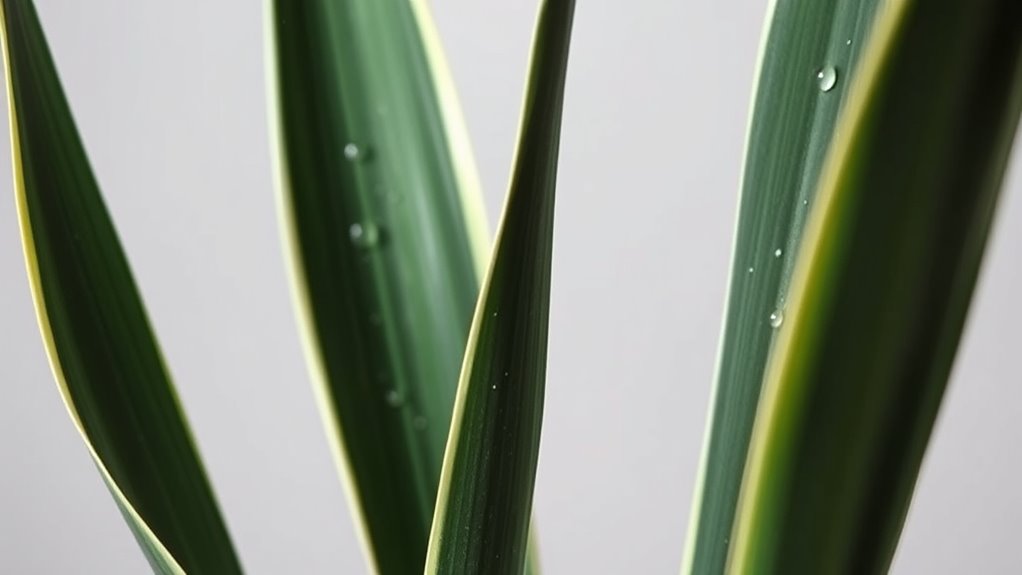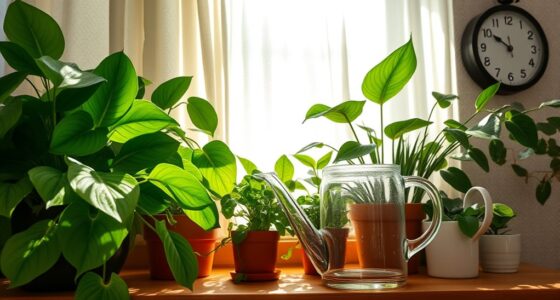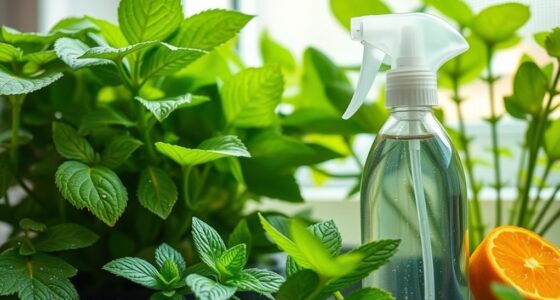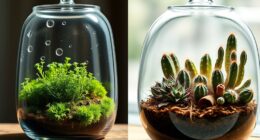The snake plant is one of the easiest houseplants to care for, thanks to its resilience and adaptability. It thrives in low light, requires infrequent watering, and can handle irregular care perfectly. Even if you forget to water or miss some sunlight, it will still survive and grow. Its forgiving nature makes it ideal for beginners and busy individuals. Keep exploring to uncover more tips on keeping your snake plant healthy and thriving.
Key Takeaways
- Snake plants are highly resilient, thriving even with minimal care and neglect.
- They tolerate low light conditions, making them ideal for dim indoor spaces.
- Require infrequent watering; allow soil to dry completely between waterings.
- Their hardy nature makes them nearly impossible to kill, suitable for beginners.
- They adapt well to various indoor environments, tolerating different temperatures and humidity levels.
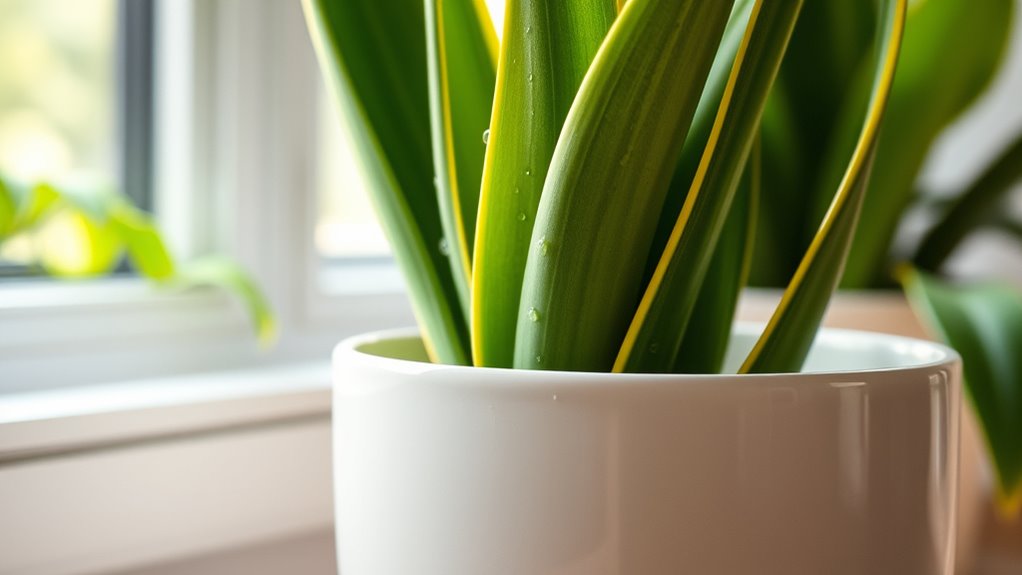
Snake plants are among the most resilient houseplants, often thriving even when neglected. One of their biggest advantages is their ability to survive in low light conditions. Unlike many other indoor plants that require bright, direct sunlight, snake plants can adapt easily to dimmer spaces. Whether you place them in a shady corner of your living room or near a window that doesn’t get much sun, they’ll still grow steadily. This makes them perfect for apartments or offices where natural light might be limited. You won’t have to worry about moving them around or providing special lighting setups—snake plants are happy with whatever ambient light they receive.
Another key trait that contributes to their survival is drought tolerance. Snake plants store water in their thick, upright leaves, so they don’t need frequent watering. In fact, overwatering is one of the most common mistakes that can harm these plants. You can let the soil dry out completely between waterings, which not only prevents root rot but also mimics their natural desert-like environment. During colder months or periods of neglect, they often require even less water, making them incredibly low-maintenance. If you forget to water them for a few weeks, don’t worry—your snake plant will likely be just fine. Their ability to withstand drought means they’re practically indestructible, even if you’re away or tend to forget about plant care.
Because snake plants are so adaptable, they’re excellent for beginners or those with busy schedules. You don’t need to fuss over watering schedules or perfect lighting conditions. They’re forgiving of irregular care, which is why many people consider them almost impossible to kill. Their natural resilience means they can handle a range of indoor environments, from warm and humid to cooler, drier spaces. You might not even notice when they’re slightly underwatered or in low light because they continue to survive and slowly grow. As long as you avoid overwatering and give them some indirect light when possible, they’ll thrive with minimal effort.
Frequently Asked Questions
How Often Should I Repot My Snake Plant?
You should repot your snake plant every 2-3 years or when it outgrows its pot. Follow your watering schedule carefully—don’t overwater—and choose a pot size that’s just slightly larger than the current one to prevent overwatering issues. Repotting helps refresh the soil, promotes healthy growth, and guarantees your snake plant stays strong. Keep an eye on root growth to determine the right time to upgrade.
Can Snake Plants Tolerate Low Humidity Environments?
Did you know snake plants can thrive in environments with humidity as low as 10%? They tolerate low humidity environments surprisingly well, making them perfect for indoor spaces with dry air. You won’t need to worry about high humidity levels harming your plant, as snake plants have excellent humidity tolerance. Just make certain they get enough light and avoid overwatering, and they’ll stay healthy even in low humidity settings.
What Is the Ideal Temperature Range for Snake Plants?
You should keep your snake plant’s temperature between 70-90°F for ideal growth rate and vibrant leaf coloration. Temperatures below 50°F can slow growth and cause leaf discoloration, while extremes over 100°F may stress the plant. Maintaining this range ensures your snake plant thrives, with healthy, upright leaves and consistent growth. Avoid sudden temperature fluctuations, and your plant will stay resilient and beautiful.
Are Snake Plants Safe for Pets?
You might think your snake plant is a pet-safe hero, but actually, it’s a bit of a toxic villain. Yes, pet safety is a concern here; the plant contains saponins that can cause nausea or vomiting if your curious kitty or pup nibbles on it. So, if you want to keep your furry friends safe, it’s best to place the snake plant out of their reach and consider safer alternatives.
How Can I Improve Drainage for My Snake Plant?
To improve drainage for your snake plant, start by adding soil amendments like perlite or coarse sand to your potting mix. These materials create air pockets, preventing water from stagnating. Additionally, use proper watering techniques—water only when the top inch of soil is dry, and make certain your pot has drainage holes. This combination helps prevent overwatering and keeps your snake plant healthy and thriving.
Conclusion
So, why not give the snake plant a try? Its resilience makes it almost impossible to kill, even if you forget to water it now and then. With minimal care, you’ll enjoy its striking look and air-purifying benefits without the stress. Isn’t it time you added a low-maintenance plant to your space? Once you see how easy it is to care for, you’ll wonder why you didn’t start sooner. Happy planting!

